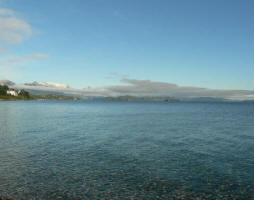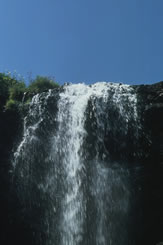 Summit on the Millennium Development Goals; 20-22 September 2010 - Water and sanitation for all
Summit on the Millennium Development Goals; 20-22 September 2010 - Water and sanitation for all
The UN Summit on the Millennium Development Goals concluded with the adoption of a global action plan to achieve the eight anti-poverty goals by their 2015 target date and the announcement of major new commitments for women's and children's health and other initiatives against poverty, hunger and disease. Visit the Summit website!
--
Water and sanitation for
all: looking beyond the numbers
The world is likely to miss the MDG
sanitation target. This blog argues that official indicators fail to take into
account alternative ways of improving water and sanitation.
By Jeremy Allouche & Lyla Mehta
Water and sanitation have been the focus of international development at least since the 1970s. Despite regular global action, the situation is still wanting. According to the 2010 Joint Monitoring Progress Report of the WHO on Water and Sanitation, 87% of global population uses improved drinking water sources, an increase in 10% in 18 years. However, 884 million people still lack access to drinking water. While the water Millennium Development Goals (MDGs) may be realised, sanitation remains seriously off track with 2.6 billion people lacking access to improved sanitation. The world is likely to miss the MDG sanitation target by a billion people with sub-Saharan Africa seriously off track.
Achieving the Millennium Development Goals for water and sanitation is clearly a priority in many UN agencies as reflected in the number of agencies and annual reports on the topic: UNESCO World Water Assessment Programme is in charge of the World Water Development Report, the World Health organisation has just released its UN-Water Global Annual Assessment of Sanitation and Drinking-Waterand UNICEF in collaboration with WHO publishes the Joint Monitoring Programme (JMP) report. However, to what extent should these assessments and indicators serve as a basis for donor policies and priorities? This question is highly relevant because a new political initiative, the sanitation and water for all initiative, might link the commitments and investment needed according to these indicators.
Most international organisations recognise the limits of these indicators. In this light, the development of further indicators on equity services is welcomed. Furthermore, the need to create new indicators on reliability and sustainability of water and sanitation systems is acknowledged by the different international organisations and will undoubtedly improve our understanding of the challenges faced in the sector.While not wanting to critique these efforts and indicators, it is worth stating how enhancing water and sanitation is severely restricted by the definition given by the Millennium Development Goals and its impact on indicators. Access to drinking water and to basic sanitation is measured by the MDG indicators, which focus on the proportion of population using an improved drinking-water source and the proportion of population using an improved sanitation facility.
It is worth noting that JMP statistics and definitions of ‘improved’ are contested and controversial and do not take into account cultural and local perceptions of what works or not. Many toilets built in the course of Community Led Total Sanitationinterventions would not count as ‘improved’ because they may just be pits in the ground, and not with slabs or pour flushes. Similarly shared toilets/ latrines do not count as ‘improved’ (although governments like Ghana decided to consider the installation of shared sanitation as an improvement). Measurement of MDG progress is by averages which say little about regional variations and variations between socio-economic group or by gender. They may not focus on water quality issues and the time required by women and girls to fetch water. Both these have serious implications for human health and wellbeing. Overall measurement issues may appear to be technical but they have considerable consequences in the way donor-driven policy priorities are defined. Gender blindness means that women’s interests and concerns are rarely represented at both the macro and micro levels.
Official indicators also leave out a huge range of local initiatives and alternative ways of improving water and sanitation that fall outside the MDGs.
One can indeed find many other examples. The most revealing one is that of peri-urban (slum) areas which are not covered in these statistics. This is a recognised problem by many agencies and actually a new task force has been created with UN Habitat to work on this topic. Nonetheless, there is a real danger that transition phases and low tech alternative technologies will be disregarded although this may be the area where most investment and priorities are needed. The vicious circle is that if these are outside the scope of indicators in terms of improvement categories, donors and international community will have no incentives to focus on them.
We thus hope that in New York next week, donors will begin to think outside the box of the MDG categories. We have focused here on poverty reduction strategies and low-tech alternative technologies that fall outside MDG indicators on improved access to water and sanitation. But donors also need to think outside of the MDG box in a more joint up way and break down conventional sectoral barriers. Water and sanitation need to be mainstreamed in wider development, public health and poverty reduction efforts. A village woman in Kenya does not separate health, water, sanitation and livelihoods concerns. She also knows that school sanitation and an accessible water source will help keep her teenage daughter in school. But policy makers still cling onto their sectors and remits, ignoring the multidimensional aspects of the MDGs and how joint up they need to be on-the-ground.
| Contact information | n/a |
|---|---|
| News type | Inbrief |
| File link |
http://www.un.org/en/mdg/summit2010/ |
| Source of information | UN |
| Keyword(s) | MDGs |
| Subject(s) | DRINKING WATER , DRINKING WATER AND SANITATION : COMMON PROCESSES OF PURIFICATION AND TREATMENT , SANITATION -STRICT PURIFICATION PROCESSES |
| Relation | http://community.eldis.org/Environmentnews/.59b8e85e/.59df98bb |
| Geographical coverage | n/a |
| News date | 01/10/2010 |
| Working language(s) | RHAETO-ROMANCE |
 you are not logged in
you are not logged in





